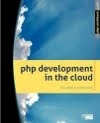It's been a while since I last blogged so I am packing it all up with a tags-like title for a change.
Over the past few months, there had been several Gmagick releases that incorporate a few fixes and some new features. Check out the release notes on PECL for more info. A big thank you to all that had tried it out and had contributed fixes.For Windows users, Gmagick is now available for Windows, grab the DLLs from Mikko's valokuva.
On the evangelism side of things, I wrote about using Gmagick along with Amazon's Elastic MapReduce cloud service to do color searching. This appears on techPortal. Yes, it is indeed quite long, according to Cal Evans. It showcases how Amazon's cloud allows developers to be flexible with the precision of both the pixel scope for color quantization and the proximity of colors to search within a 3D colorspace. This burrowing into Elastic MapReduce is part of some other cloud spotting that I had been enjoying while working on an upcoming book with Ivo Jansch.
That's not all!(Intercom speakers) There's an article on Gmagick in the October issue of php|architect as well. In this article, elephpant visits the museum. Curious? Check out the October issue!
For those that are interested in more Gmagick related documentation (besides the manual), Vikram wrote a nice and rather comprehensive tutorial on Zend Developer Zone.
That's about it now.


